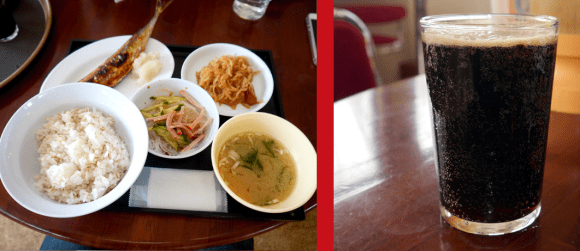
Hokkaido, Japan’s rural, northernmost island, has a wealth of tourist attractions. But while most travelers spend their time enjoying the natural beauty of the region’s mountains, forests, and oceans, visitors to the city of Abashiri often spend their time in a very different way.
That’s because in contrast to the sense of freedom Hokkaido’s wide-open vistas are so evocative of, Abashiri is home to the Abashiri Prison Museum. Aside from exhibits on the history of incarceration, the museum also has a cafeteria, where diners can eat a recreation of modern Japanese prison food, and even knock back a bottle of Abashiri Prison Stout beer.
Abashiri’s permanent population has been supplemented by convicts since the Meiji Era of the late 1800s. Even today, criminals are housed in Abashiri, although they’re placed in a more modern correctional facility than the town’s original one.
With no more need to keep prisoners in the old jail, the building has been converted into the Abashiri Prison Museum, and travelers with time to spare can see more than a dozen preserved and recreated aspects of the prison. Even if you’re in a rush, though, you can get a literal taste of life on the inside at the adjacent Prison Cafeteria.
▼ Thankfully, seating is at tables, not in cells.
While the restaurant has inexpensive standards such as ramen, beef bowls, soba, and udon, what most people come for are the Prison Food Set Meals, recreations of the meals served to the actual prisoners currently being held at Abashiri’s prison. On the day we stopped by, this meant a choice between two types of fish: samma (saury) or hokke (a type of mackerel).
We opted for the saury, which also came with sliced daikon radish, harusame salad, miso soup, and a 70/30 mix of white rice and barley. In stark contrast to a typical Japanese restaurant meal, where the foods and plates are arranged to be as aesthetically pleasing as possible, the no-frills presentation wasn’t doing much to visually stimulate our appetite.
Surprisingly enough, though, it tasted pretty good. As a matter of fact, you could do a lot worse than this, flavor-wise, at some cheap restaurants. As long as you’re OK with a very simple, austere collection of flavors, you might even be comfortable eating this regularly, provided you could find a way to do so without actually being locked up.
▼ If your taste buds need more stimulation, though, the cafeteria also has non-prison-spec curry.
It’s not just the food that’s prison-themed, either. If you’re feeling thirsty, you can also order a bottle of cold Abashiri Prison Stout, or Kangoku no Kuro (Prison Black) as it’s called in Japanese.
Despite the name, Abashiri Prison Stout isn’t made by convicts as part of a work release program, nor is it bottled pruno made by prisoners who hide bags of fermenting fruit under their beds. In addition to its prison and museum, Abashiri also has its own microbrewery, Abashiri Beer. The company offers a number of products, such as Ice Flow Draft and Abashiri Premium, and Prison stout is simply the most startlingly named.
The beer itself is pitch black. Light has as much chance of escaping the beer’s confines as prisoners do of breaking out of Abashiri Prison. The flavor, meanwhile, is what you’d expect from the color: full-bodied and captivating.
In addition to the Prison Museum’s Cafeteria, Abashiri Prison Stout can be purchased in souvenir shops in the city as well as online here directly from the brewer. Just make sure you’ve got a designated driver if you’re planning on knocking back a few and also are keen to stay out of jail yourself, since drunk driving is, of course, a crime.
Related: Abashiri Prison Museum website
Photos: RocketNews24
[ Read in Japanese ]

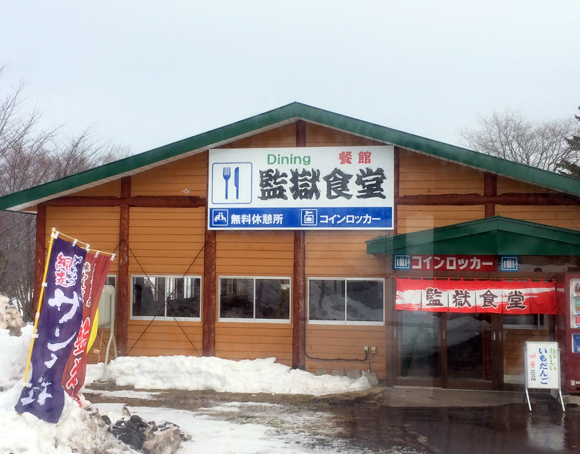
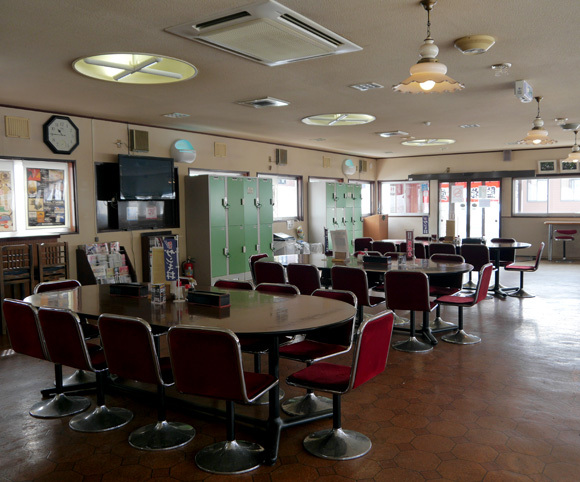
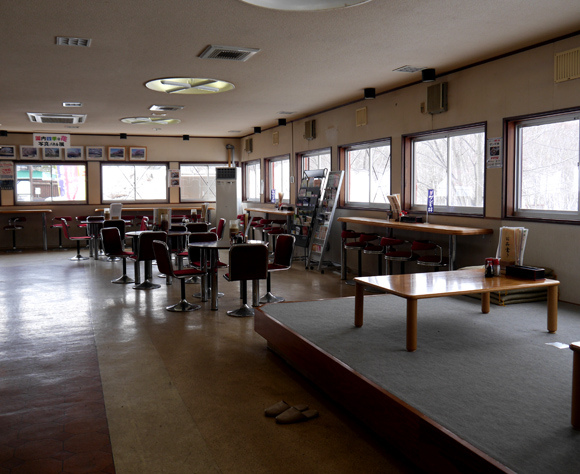
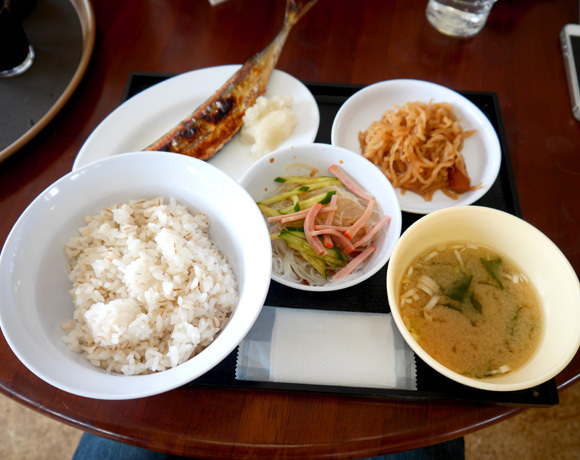
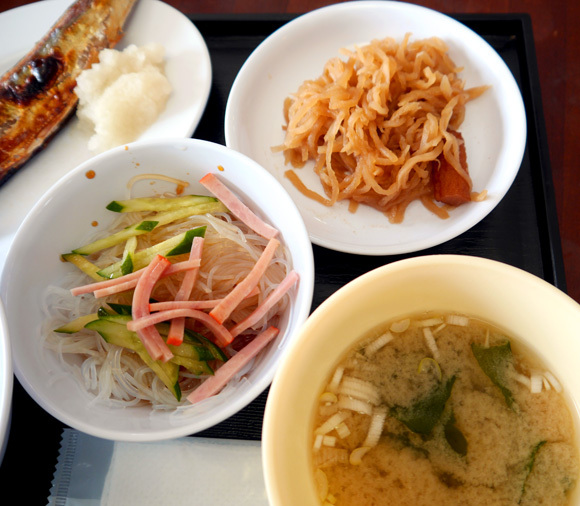
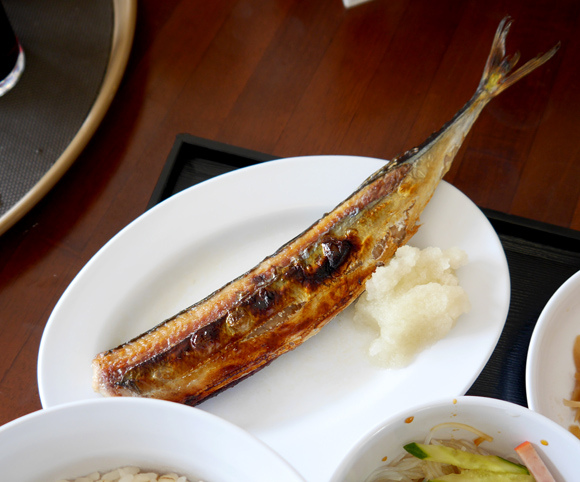
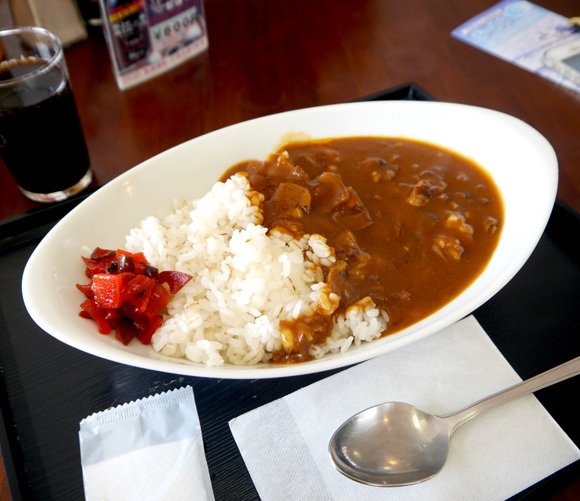
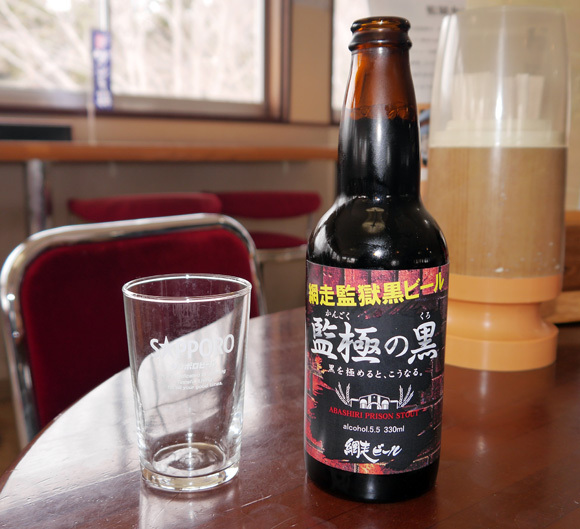
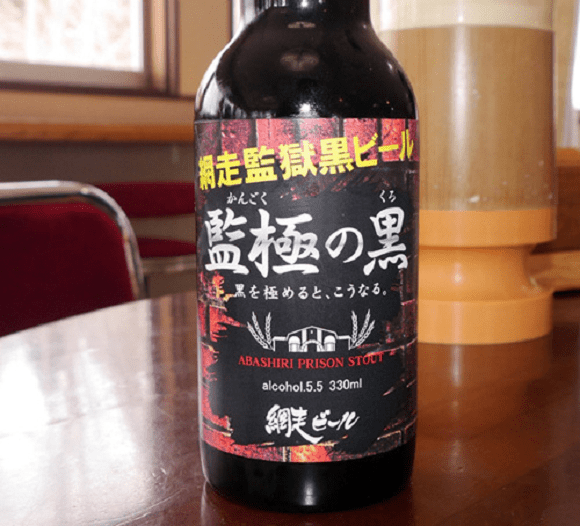

 Japan has a special beer brewed to go great with dried ramen noodle snacking
Japan has a special beer brewed to go great with dried ramen noodle snacking We try blue beer made with drift ice from Hokkaido
We try blue beer made with drift ice from Hokkaido 【TBT】This blue beer looks like it came from alcoholic Willy Wonka’s factory
【TBT】This blue beer looks like it came from alcoholic Willy Wonka’s factory We spend Culture Day in prison, food was arguably better than Yoshinoya
We spend Culture Day in prison, food was arguably better than Yoshinoya Runny curry, no pudding spoons among complaints of Japanese prison inmates
Runny curry, no pudding spoons among complaints of Japanese prison inmates All-you-can-drink Starbucks and amazing views part of Tokyo’s new 170 meter-high sky lounge
All-you-can-drink Starbucks and amazing views part of Tokyo’s new 170 meter-high sky lounge McDonald’s new Happy Meals offer up cute and practical Sanrio lifestyle goods
McDonald’s new Happy Meals offer up cute and practical Sanrio lifestyle goods Mister Donut ready to make hojicha dreams come true in latest collab with Kyoto tea merchant
Mister Donut ready to make hojicha dreams come true in latest collab with Kyoto tea merchant Studio Ghibli glasses cases let anime characters keep an eye on your spectacles
Studio Ghibli glasses cases let anime characters keep an eye on your spectacles The oldest tunnel in Japan is believed to be haunted, and strange things happen when we go there
The oldest tunnel in Japan is believed to be haunted, and strange things happen when we go there Randomly running into a great sushi lunch like this is one of the best things about eating in Tokyo
Randomly running into a great sushi lunch like this is one of the best things about eating in Tokyo Starbucks reopens at Shibuya Scramble Crossing with new look and design concept
Starbucks reopens at Shibuya Scramble Crossing with new look and design concept Beautiful Sailor Moon manhole cover coasters being given out for free by Tokyo tourist center
Beautiful Sailor Moon manhole cover coasters being given out for free by Tokyo tourist center More foreign tourists than ever before in history visited Japan last month
More foreign tourists than ever before in history visited Japan last month Hamster abandoned at Tokyo ramen restaurant gets new home
Hamster abandoned at Tokyo ramen restaurant gets new home Disney princesses get official manga makeovers for Manga Princess Cafe opening in Tokyo
Disney princesses get official manga makeovers for Manga Princess Cafe opening in Tokyo Beautiful new Final Fantasy T-shirt collection on the way from Uniqlo【Photos】
Beautiful new Final Fantasy T-shirt collection on the way from Uniqlo【Photos】 Is the new Shinkansen Train Desk ticket worth it?
Is the new Shinkansen Train Desk ticket worth it? Foreign English teachers in Japan pick their favorite Japanese-language phrases【Survey】
Foreign English teachers in Japan pick their favorite Japanese-language phrases【Survey】 Japanese convenience store packs a whole bento into an onigiri rice ball
Japanese convenience store packs a whole bento into an onigiri rice ball We try out “Chan Ramen”, an underground type of ramen popular in the ramen community
We try out “Chan Ramen”, an underground type of ramen popular in the ramen community Studio Ghibli releases Kiki’s Delivery Service chocolate cake pouches in Japan
Studio Ghibli releases Kiki’s Delivery Service chocolate cake pouches in Japan Japan’s bone-breaking and record-breaking roller coaster is permanently shutting down
Japan’s bone-breaking and record-breaking roller coaster is permanently shutting down New definition of “Japanese whiskey” goes into effect to prevent fakes from fooling overseas buyers
New definition of “Japanese whiskey” goes into effect to prevent fakes from fooling overseas buyers Our Japanese reporter visits Costco in the U.S., finds super American and very Japanese things
Our Japanese reporter visits Costco in the U.S., finds super American and very Japanese things Studio Ghibli unveils Mother’s Day gift set that captures the love in My Neighbour Totoro
Studio Ghibli unveils Mother’s Day gift set that captures the love in My Neighbour Totoro Foreign passenger shoves conductor on one of the last full runs for Japan’s Thunderbird train
Foreign passenger shoves conductor on one of the last full runs for Japan’s Thunderbird train Domino’s Japan now sells…pizza ears?
Domino’s Japan now sells…pizza ears? New Japanese KitKat flavour stars Sanrio characters, including Hello Kitty
New Japanese KitKat flavour stars Sanrio characters, including Hello Kitty Kyoto creates new for-tourist buses to address overtourism with higher prices, faster rides
Kyoto creates new for-tourist buses to address overtourism with higher prices, faster rides Sales of Japan’s most convenient train ticket/shopping payment cards suspended indefinitely
Sales of Japan’s most convenient train ticket/shopping payment cards suspended indefinitely Sold-out Studio Ghibli desktop humidifiers are back so Totoro can help you through the dry season
Sold-out Studio Ghibli desktop humidifiers are back so Totoro can help you through the dry season Japanese government to make first change to romanization spelling rules since the 1950s
Japanese government to make first change to romanization spelling rules since the 1950s Ghibli founders Toshio Suzuki and Hayao Miyazaki contribute to Japanese whisky Totoro label design
Ghibli founders Toshio Suzuki and Hayao Miyazaki contribute to Japanese whisky Totoro label design Doraemon found buried at sea as scene from 1993 anime becomes real life【Photos】
Doraemon found buried at sea as scene from 1993 anime becomes real life【Photos】 Tokyo’s most famous Starbucks is closed
Tokyo’s most famous Starbucks is closed One Piece characters’ nationalities revealed, but fans have mixed opinions
One Piece characters’ nationalities revealed, but fans have mixed opinions We asked a Uniqlo employee what four things we should buy and their suggestions didn’t disappoint
We asked a Uniqlo employee what four things we should buy and their suggestions didn’t disappoint Princesses, fruits, and blacksmiths: Study reveals the 30 most unusual family names in Japan
Princesses, fruits, and blacksmiths: Study reveals the 30 most unusual family names in Japan New line of anime panties slip off the animated characters on onto cold drink bottles 【Photos】
New line of anime panties slip off the animated characters on onto cold drink bottles 【Photos】 Dine out and isolate at the same time at Tokyo’s Prison Restaurant: The Lockup
Dine out and isolate at the same time at Tokyo’s Prison Restaurant: The Lockup Stay at the Nara Juvenile Prison hotel in Japan in 2020
Stay at the Nara Juvenile Prison hotel in Japan in 2020 Japanese prison offers manga background work program, artwork offered online【Pics】
Japanese prison offers manga background work program, artwork offered online【Pics】 Nintendo DS on the menu as Japanese prisons get creative to keep ageing prisoners’ brains active
Nintendo DS on the menu as Japanese prisons get creative to keep ageing prisoners’ brains active Japanese prison mascot appears in children’s colouring book made by prison inmates
Japanese prison mascot appears in children’s colouring book made by prison inmates Osaka man imprisoned on rape conviction released in exceptional reversal of charges
Osaka man imprisoned on rape conviction released in exceptional reversal of charges Yakuza-themed love hotel rooms! Great for couples, friends, and business meetings, owners say
Yakuza-themed love hotel rooms! Great for couples, friends, and business meetings, owners say Eat like the judges and lawyers of Japan at this theme restaurant in Kumamoto
Eat like the judges and lawyers of Japan at this theme restaurant in Kumamoto Super-detailed cherry blossom forecast maps show early arrival for Japan’s 2024 sakura season
Super-detailed cherry blossom forecast maps show early arrival for Japan’s 2024 sakura season Guangzhou City to allow co-workers and neighbors to give consent for other people’s organ donations
Guangzhou City to allow co-workers and neighbors to give consent for other people’s organ donations We sample blue Drift Ice Curry from the India of the Okhotsk Sea
We sample blue Drift Ice Curry from the India of the Okhotsk Sea We test out a new way to make fried chicken, the Prison School way 【RocketKitchen】
We test out a new way to make fried chicken, the Prison School way 【RocketKitchen】 Ex-plant worker jailed for 42 months for tainting frozen food
Ex-plant worker jailed for 42 months for tainting frozen food Instant vs. Restaurant Ramen Project: Ippudo spicy miso tonkotsu battle【Taste test】
Instant vs. Restaurant Ramen Project: Ippudo spicy miso tonkotsu battle【Taste test】
Leave a Reply